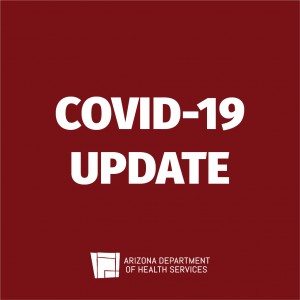 Although a COVID-19 vaccine is not yet available, public health professionals across Arizona and around the country are already hard at work laying the groundwork for efficient and inclusive allocation and distribution of the vaccine. We don’t know when and how the vaccine is coming, quite yet. But based on lessons learned with the 2009 H1N1 vaccine distribution and ADHS’ decades of experience managing the statewide Vaccines for Children (VFC) program, there are certain aspects where we can start planning.
Although a COVID-19 vaccine is not yet available, public health professionals across Arizona and around the country are already hard at work laying the groundwork for efficient and inclusive allocation and distribution of the vaccine. We don’t know when and how the vaccine is coming, quite yet. But based on lessons learned with the 2009 H1N1 vaccine distribution and ADHS’ decades of experience managing the statewide Vaccines for Children (VFC) program, there are certain aspects where we can start planning.
Last week, ADHS submitted its Draft Arizona COVID-19 Vaccination Plan, a working document that will continue to be updated as we receive more information from the Centers for Disease Control and Prevention (CDC) and other federal partners. Building on Arizona’s Pandemic Influenza Response Plan, the draft anticipates initial periods when a vaccine is available in limited doses and then more widely available.
To inform this draft plan, ADHS has worked since April with a large and diverse group of stakeholders that includes county and tribal public health, outpatient healthcare providers and associations, inpatient healthcare providers and associations, payors, pharmacy and EMS stakeholders, and state and local emergency management agencies. This partner involvement and feedback is so critical to making sure that Arizona has the best possible plan for vaccine distribution, and also includes the development and implementation of training and exercises to inform the state’s pandemic vaccine response.
The Draft Arizona COVID-19 Vaccination Plan highlights Arizona’s local allocator model, which designates county health departments and tribal health partners as the local authorities responsible for approving vaccine allocations to providers within each jurisdiction. It also focuses on the importance of communication, as the CDC anticipates a vaccine requiring two doses spaced three to four weeks apart.
ADHS and its partners will convene a state advisory committee, the Vaccine and Antiviral Prioritization Advisory Committee, once more information about the forthcoming vaccine and its availability is known . This group of experts is responsible for reviewing CDC guidance, including guidance from the Advisory Committee on Immunization Practices and providing allocation recommendations based on priority groups at highest risk for severe disease.
As important as a vaccine will be, it’s critical to continue the steps we’ve used to limit the spread of COVID-19: keep masking up, physically distancing, washing hands often, and taking other precautions.









